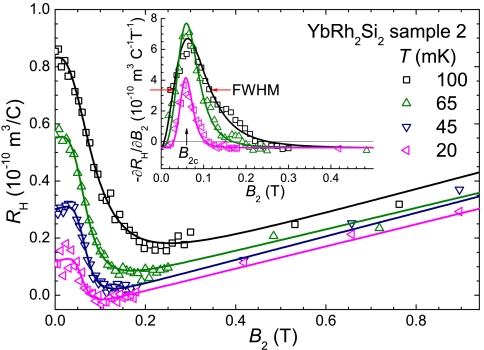Fig. 1.
Crossed-field Hall-effect results of YbRh2Si2. Selected isotherms of the initial-slope Hall coefficient RH as a function of B2 for sample 2 [which has the smallest residual resistivity (cf. SI Text II)]. The solid lines are best fits of the empirical crossover function given in Eq. 5 in Materials and Methods, extending up to 2 T. The anomalous contribution to the Hall effect can be neglected as explained in SI Text III. (Inset) Illustration of the decomposition of the crossover in RH(B2) into the critical and background components. Here, -∂RH(B2)/∂B2 is plotted as a function of B2 together with the derivatives of the fitted functions (solid lines). The background crossover term corresponds to the nonzero constant offset. The critical crossover term is represented by the sharp peak near B2c (marked by vertical arrow), whose FWHM is defined as the crossover width (specified for one temperature by the red horizontal arrows). Standard errors of RH are typically of the size of the symbols.

